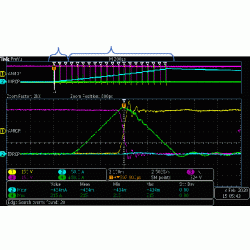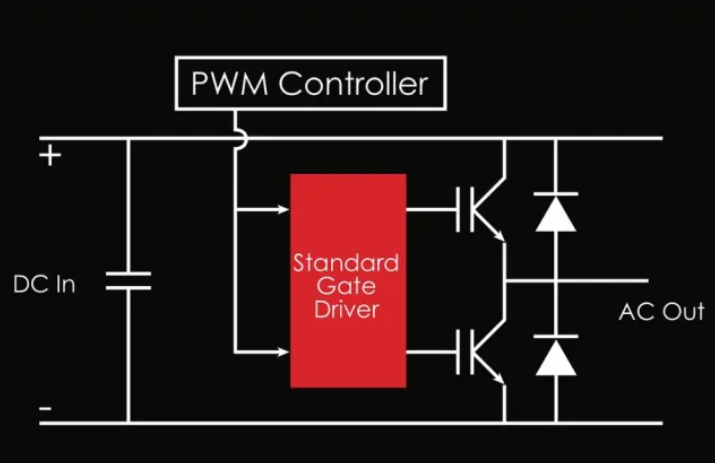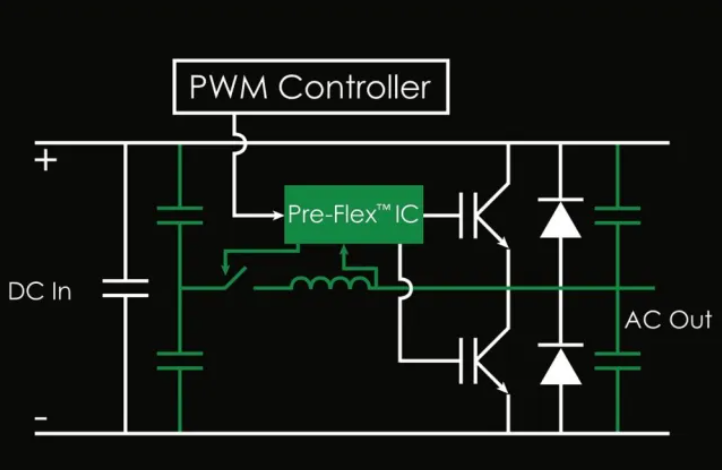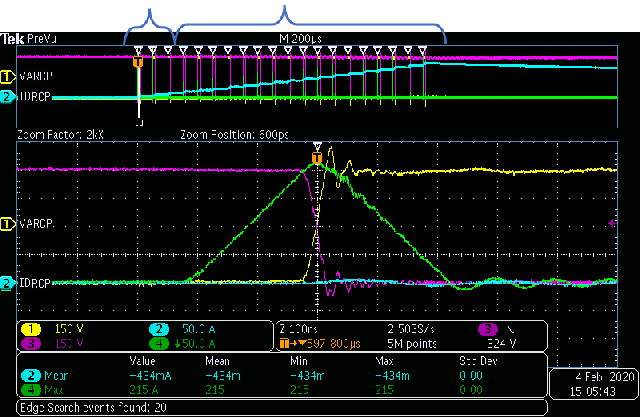Artificial Intelligence (AI) Soft Switching for Power Converters

Artificial Intelligence (AI) Soft Switching for Power Converters
Artificial Intelligence-based soft-switching power controller is a control system that combines artificial intelligence (AI) technology with soft-switching technology to optimize the operation of power converters and improve their efficiency. The technology is particularly valuable in applications where energy efficiency, reduced switching losses and improved thermal management are critical. Soft switching is a switching technology that minimizes switching losses by reducing the overlap between voltage and current waveforms during switching transitions of power semiconductor devices (such as MOSFETs , IGBTs , power diodes). This technology is used in various power conversion systems such as DC-DC converters and DC-AC inverters.
Soft switching is mainly used in high-frequency power converters to reduce switching losses, diode recovery losses and noise radiated by the converter. It is of two types: self-resonance and forced resonance. In the case of self-resonance, the self-oscillating circuit avoids the overlap of voltage and current during commutation of the target transistor. The main disadvantage of the self-resonant soft-switching topology is that it is only suitable for non-isolated power converters where the input voltage and output load are kept within a narrow range. Forced resonant soft switching topology has all the advantages of self-resonant soft switching but is more complex and less flexible to changing input and load conditions.
Hard and soft switching
When a transistor is turned on or off, the transition time required to reach the next working state is very short, but it is not instantaneous and will cause waste of energy loss (switching loss). Switching losses account for a large portion of power converter losses.
Hard switching simply forces a transistor to turn on and off by increasing current or voltage to enable modified states. It is well known that hard switching places very high hardware demands on transistors and shortens their lifespan.
Power converters using hard switching must balance the increase in switching frequency with the need for losses to meet the required system efficiency. In practice, this means that systems that require high efficiency must switch slowly to gain efficiency. Designers must implement larger energy storage solutions to maintain power for longer between transistor switching cycles.
Reducing the switching frequency means an increase in harmonic distortion, requiring the use of output filters.
In effect, hard switching limits the maximum operating switching frequency of a transistor. Transistors have maximum operability in terms of heat dissipation, which must be efficiently managed between the various losses involved. Increasing switching frequency to reduce system size means that transistors must carry less operating current to withstand higher switching losses. This can be solved by adding larger transistors, which increases the cost of the system. Without switching losses, transistors are free to switch faster or handle more current for high-power applications (Figure 2).
The concept of soft switching, on the other hand, uses external circuitry to avoid overlapping of voltage and current waveforms when switching transistors. There are two types: self-resonance and forced resonance. In the first case, there is a self-oscillating circuit, which reduces switching losses, increases efficiency and reduces electromagnetic interference. Application shortcomings limit its application in the power converter market of DC/DC converters.
Hard Switched Architecture

The forced resonant soft-switching topology has the same advantages as the previous topology, but is computationally demanding, cumbersome, and has limited adaptability to different input conditions and load ranges.
AI switching technology
In recent years, many AC/DC, DC/DC, DC/AC solutions have focused on the development of faster switching devices with lower conduction losses and the development of new switching topologies. IGBTs remain the standard used in a variety of converter solutions, with SiC and GaN becoming increasingly popular as costs decrease. There are many layout techniques available and engineers can optimize their solution based on the application.
Field stop trench IGBTs offer significant improvements in reducing losses. Most of the latest generation IGBTs produced by leading manufacturers use a combination of structural geometries to achieve optimized energy concentration.
However, material limitations and additional implementation costs of newer, more complex manufacturing processes remain a challenging barrier to efficiency improvements in traditional component optimization systems.
In high-voltage applications, the use of GaN and SiC solutions is becoming increasingly popular as they reduce switching losses and therefore provide the option to increase switching frequencies. The direct impact of increased operating frequency will have a tangible impact on the solar inverter market, for example, the size, weight and cost of the output inductor may be significantly reduced.
Increasing frequency means that noise and its transients need to be suppressed. If power converters still rely on traditional switching architectures for operation, mass adoption of new power switches may remain out of reach.
“By lowering the frequency, we enter the soft switching market. Soft switching is still only used in self-resonant DC/DC power converters. Isolated soft switching DC/AC power converters were never perfected, which is why energy engineers /DC soft switching is called the "Holy Grail" of power electronics," said Bruce Renouard, CEO of Pre-Switch Inc. However, simply increasing transistor switching times by using faster devices can result in intolerable dV/dt and EMI levels.
Pre-Switch solves the soft-switching problem by employing a built-in artificial intelligence (AI) integrated circuit (called Pre-Flex) that precisely controls and adjusts the timing of a very small, low-cost resonant circuit to ensure minimal switching device current flow overlap with the voltage waveform.
Soft switching with built-in AI reduces switching losses by 70-95% and solves the dV/dt issues associated with faster transistors.
"Pre-switching ensures accurate soft switching and reduces EMI, switching frequency is higher than ever before," said Bruce Renouard
Pre-Flex ICs learn and adapt to changing system input and device conditions on a cycle-by-cycle basis to ensure optimal soft switching. In effect, it locks each transistor into reliable forced resonant soft switching despite variations in input voltage, output load, system temperature, and manufacturing tolerances
Pre-Switch Architecture

The technology has been used to switch 600V IGBT transistors at over 100kHz, and 900V silicon carbide transistors at 1 MHz. The cost savings from adding this device are minimal compared to the system level. Additionally, pre-switching technology can be used to upgrade existing hard-switching systems in the field. Pre-Flex is integrated into the standard driver board of the 1200V 225A EconoDUAL in half-bridge configuration.
“Pre-Flex is designed for use with power converters in half-bridge, full-bridge, or three-phase configurations. Each IC includes a built-in serial communication port for communicating fault conditions and Pre-Switch Blink™ for Ensures maximum safety functionality cycle-by-cycle. The Pre-Flex IGBT family is frequency limited to 100 kHz, which typically eliminates 70-85% of system switching losses. The Pre-Flex SiC/GaN family is frequency limited to 1Mhz, which typically eliminates 90-95% of the total switching losses in the system, including the overhead of additional components. Additionally, the architecture has a built-in lossless dV/dt filter,” said Bruce Renouard.
in conclusion
After using Pre-Flex, the main parameters have been significantly improved, as shown in Table 1. X-Factor is a normalized coefficient that indicates how many times the device switching speed can be increased using Pre-Switch AI control algorithm technology. Compared to the same device with hard switching, the losses are the same. This factor indicates improved performance in terms of current and switching frequency

“Pre-Switch enables customers to build systems with switching frequencies 4-5 times faster than hard-switching IGBT systems and 35 times faster than hard-switching SiC and GaN systems: this is achieved with half the transistor count. For SiC-based electric vehicles The inverter, which increases the switching frequency from the ubiquitous 10kHz to 100kHz or 300kHz, produces a near-perfect sine wave without any output filter. The result is the elimination of unnecessary motor iron losses and improved low torque and low Motor efficiency at RPM. Higher switching frequencies also enable higher RPM, lighter weight and lower cost motors,” says Bruce Renouard.
The CleanWave 200kW silicon carbide (SiC) automotive inverter evaluation system enables power supply design engineers to study the accuracy of the company's soft-switching architecture and platform under varying load, temperature, device tolerance and degradation conditions. The platform includes Pre-Drive3 controller boards and RPG gate driver boards powered by Pre-Flex FPGAs, which virtually eliminate switching losses, enabling fast switching at 100kHz. Double-pulse test data shows that the Pre-Switch soft-switching platform can reduce total system switching losses by 90% or more

AI-based controllers utilize artificial intelligence algorithms and machine learning models to optimize the switching of power devices in real time. Here's how it works:
Data collection: Sensors and measurement devices collect data, including voltage, current, temperature, and load conditions, to monitor the status of the system.
Data processing: The collected data is processed and analyzed by artificial intelligence algorithms, including neural networks, reinforcement learning or expert systems. These algorithms learn from historical data and adapt to changing conditions.
Optimal switching control: Based on processed data and artificial intelligence decisions, the controller determines the optimal timing, duty cycle and sequencing of soft switching of power devices. This is done to minimize switching losses and improve energy efficiency.
Real-time adjustment: The artificial intelligence controller continuously adjusts the switching mode of the power device in real time in response to changes in load, environmental conditions and other variables. The purpose is to maintain system stability while optimizing power conversion.
Feedback loops: AI controllers often contain feedback loops that allow them to continuously learn and adapt to improve their control strategies over time. This adaptive capability is valuable for dealing with change and uncertainty.







